The National Register of Historic Places (NRHP) is the United States federal government's official list of districts, sites, buildings, structures, and objects deemed worthy of preservation for their historical significance or "great artistic value". A property listed in the National Register or located within a National Register Historic District, may qualify for tax incentives derived from the total value of expenses incurred in preserving the property.
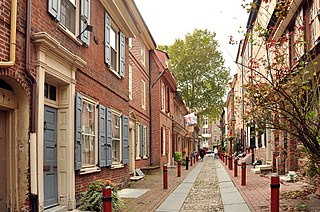
Historic districts in the United States are designated historic districts recognizing a group of buildings, archaeological resources, or other properties as historically or architecturally significant. Buildings, structures, objects, and sites within a historic district are normally divided into two categories, contributing and non-contributing. Districts vary greatly in size and composition: a historic district could comprise an entire neighborhood with hundreds of buildings, or a smaller area with just one or a few resources.

In the law regulating historic districts in the United States, a contributing property or contributing resource is any building, object, or structure which adds to the historical integrity or architectural qualities that make the historic district significant. Government agencies, at the state, national, and local level in the United States, have differing definitions of what constitutes a contributing property but there are common characteristics. Local laws often regulate the changes that can be made to contributing structures within designated historic districts. The first local ordinances dealing with the alteration of buildings within historic districts was enacted in Charleston, South Carolina in 1931.

The U.S. National Register of Historic Places (NRHP) classifies its listings by various types of properties. Listed properties generally fall into one of five categories, though there are special considerations for other types of properties which do not fit into these five broad categories or fit into more specialized subcategories. The five general categories for NRHP properties are: building, district, object, site, and structure.
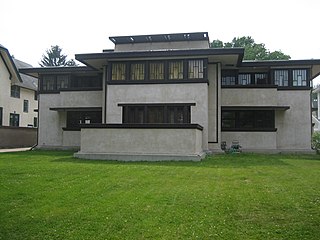
The Frank Lloyd Wright/Prairie School of Architecture Historic District is a residential neighborhood in the Cook County, Illinois village of Oak Park, United States. The Frank Lloyd Wright Historic District is both a federally designated historic district listed on the U.S. National Register of Historic Places and a local historic district within the village of Oak Park. The districts have differing boundaries and contributing properties, over 20 of which were designed by Frank Lloyd Wright, widely regarded as the greatest American architect.

The Peter A. Beachy House is a home in the Chicago suburb of Oak Park, Illinois that was entirely remodeled by architect Frank Lloyd Wright in 1906. The house that stands today is almost entirely different from the site's original home, a Gothic cottage. The home is listed as a contributing property to the Frank Lloyd Wright-Prairie School of Architecture Historic District, which was listed on the U.S. National Register of Historic Places.

Crosswicks is an unincorporated community and census-designated place (CDP) located along the Crosswicks Creek in the northern part of Chesterfield Township in Burlington County in the U.S. state of New Jersey. The area is served as United States Postal Service ZIP Code 08515.
The Midtown Historic District is a historic district in the city of Mobile, Alabama, United States. It was placed on the National Register of Historic Places on November 29, 2001, with a small boundary increase on November 18, 2020 It is roughly bounded by Taylor Avenue, Government Street, Houston Street, Kenneth Street, Springhill Avenue, and Florida Street. The district covers 467 acres (1.89 km2) and contains 1,270 contributing buildings. The majority of the contributing buildings range in age from the 1880s to the 1950s and cover a wide variety of architectural styles. The district was significantly affected by a tornado on December 25, 2012.
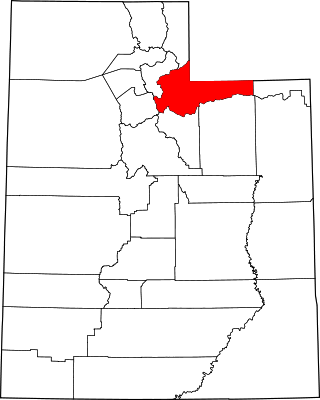
This is a list of the National Register of Historic Places listings in Summit County, Utah.

There are 75 properties listed on the National Register of Historic Places in Albany, New York, United States. Six are additionally designated as National Historic Landmarks (NHLs), the most of any city in the state after New York City. Another 14 are historic districts, for which 20 of the listings are also contributing properties. Two properties, both buildings, that had been listed in the past but have since been demolished have been delisted; one building that is also no longer extant remains listed.
The Maplewood Historic District is located in Rochester in Monroe County, New York. The district is distinguished as having landscape designs, including Maplewood Park, originally laid out by Frederick Law Olmsted.
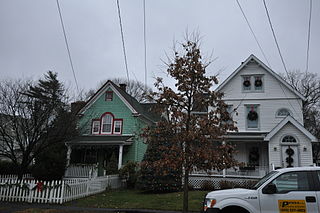
The Fourth Ward Historic District encompasses an early urban residential subdivision of Greenwich, Connecticut. Extending north from United States Route 1 along Sherwood Place, Church Street, and adjacent streets, it is one of two subdivisions created before the arrival of the railroad in Greenwich in 1848. It is characterized by dense residential construction, with architectural styles from the Greek Revival to early 20th-century styles. The district was listed on the National Register of Historic Places in 2000.

Emory Grove is a small area of bungalow style homes built in 1939 and the 1940s in Druid Hills, Georgia near Emory University. The Emory Grove Historic District, located between Emory University and the city of Decatur, Georgia, is a 90-acre (36 ha) historic district that was listed on the National Register of Historic Places in 2000.
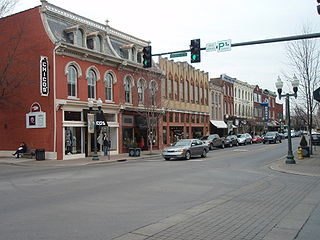
Franklin Historic District is a historic district in Franklin, Tennessee that was listed on the National Register of Historic Places in 1972. It was created to preserve historic commercial and residential architecture in a 16-block area of the original, downtown Franklin around the north, west, and south of the town square.

The Homestead Farm at Oak Ridge is a historic house and grounds located in Oak Ridge Park in the township of Clark in Union County, New Jersey and extending into the township of Edison in Middlesex County. It was listed on the National Register of Historic Places on October 25, 1995, for its significance in architecture, exploration/settlement, law, military history, and politics/government. In addition to the building, the listing includes three contributing sites and one contributing object.

The Alphabet Historic District, is a historic district in the Northwest District of Portland, Oregon which was listed on the National Register of Historic Places in 2000. It is 156.9 acres (63.5 ha) in area and includes 478 contributing buildings. It is roughly bounded by NW Lovejoy St., NW Marshall St., NW 17th Ave., W. Burnside St., and NW 24th Ave.

The Waterloo West Commercial Historic District is a nationally recognized historic district located in Waterloo, Iowa, United States. It was listed on the National Register of Historic Places in 2014. At the time of its nomination the district consisted of 25 resources, including 22 contributing buildings, and three non-contributing buildings. The buildings are from one to three stories in height, and for the most part are clad in brick. The earliest building dates to 1882 and the latest, as of 2014, to 2000. For the must part they utilize the Victorian, Romanesque Revival, and Italianate commercial styles. Ornamentation is minimal. The buildings are all commercial structures with the exception of the former Burlington, Cedar Rapids and Northern Railway Depot, designed by the Cedar Rapids architectural firm of Josselyn & Taylor. Several of the buildings housed automobile-related businesses that clustered along West Fifth Street beginning in the 1920s and 1930s.

The Tempe Wick Road–Washington Corners Historic District is a 353-acre (143 ha) historic district located in Harding Township and Mendham Township in Morris County, New Jersey. It extends along Tempe Wick Road from Mount Kemble Avenue to Cold Hill Road, and short segments of Corey Lane, Cemetery Road, Kennaday Road, Leddell Road, and Jockey Hollow Road. Tempe Wick Road is named for Temperance Wick.

The Lincoln Park Historic District in Pomona, California is a 45-block, 230-acre residential neighborhood. The district consists of 821 structures—primarily single family homes built between the 1890s through the 1940s—featuring a wide variety of architectural styles from late Victorian and National Folk homes, Craftsman and Craftsman-influenced homes, as well as late 19th and 20th Century Revival architectural styles including Colonial, Mission/Spanish, Tudor and Classical Revival.

The Morristown District, also known as the Morristown Historic District, is a historic district in the town of Morristown in Morris County, New Jersey. It was added to the National Register of Historic Places on October 30, 1973, for its significance in architecture, communications, education, military, politics, religion, social history, and transportation.



















